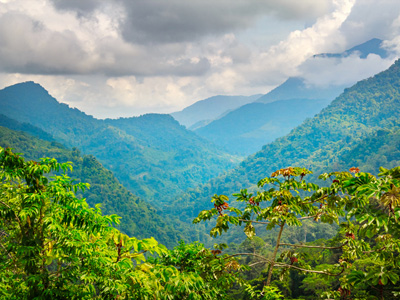
Ecosystems
Knowing how human activity impacts the planet is one of the key aims of the GCSE geography course. From this, you can develop an understanding of how the world needs to be managed in order to make sure that future generations will not suffer hardship as a result of our actions today. In order to fully understand the relationship between the natural world and humans, you need to know how ecosystems work. Global ecosystems support life on the Earth, the wellbeing of humans is closely linked to the wellbeing of global ecosystems.
Firstly, you need to be aware of what an ecosystem is. It is defined as the interdependence of plants, animals, climate, water and soil in a given location. Plants and animals are called the biotic factors whilst the climate, soil and water supply are abiotic factors.
Because an ecosystem is an interdependence, any change to one of the factors will cause changes to the others. Since human beings are mammals, as animals, we affect any ecosystem that we come into contact with. When we are extracting or taking resources from the earth, it therefore affects ecosystems.
In many cases, we don't fully appreciate the effects that we are having on an ecosystem e.g. urban development. When building new homes or an out-of-town retail centre, we notice that the trees and fields are destroyed, however, we are unaware of the changes in the other populations e.g. micro-organisms, or physical factors like the the local water table and microclimates. On a small scale, these changes are generally not particularly significant, but as cities grow and our use of resources increases, we could find that our way of life has very significant implications for the health of our planet. An example of this is the destruction of the tropical rainforests.
The key is to manage ecosystems that provide us with resources in a sustainable way. To achieve this, we need to understand how ecosystems work and for the GCSE, you need to know and to be able to use some of the key terms. The source of energy is the Sun. This is used by plants, enabling them to grow. Plants are called producers. These are eaten by animals like mice, slugs or larger herbivores. These are called the primary consumers. Animals which eat primary consumers are called secondary consumers and so on. At each level of the ecosystem, there are differing numbers of organisms, e.g. there are fewer secondary consumers than primary consumers. Also in an ecosystem, there are decomposers like worms and fungi who recycle the nutrients.
Another term that you need to know for your exam is biome. These are large-scale global ecosystems that are defined by similar abiotic factors like climate and relief e.g. mediterranean, desert and savannah. A healthy ecosystem is sustainable and where human activity disturbs it, it will change. If the change to the ecosystem is too great, it collapses. This is then a problem for the humans using the ecosystem as they lose the resources it provides.
Ready for more?
not all...
quizzers. Try to win a coveted spot on our Hall of Fame Page.







